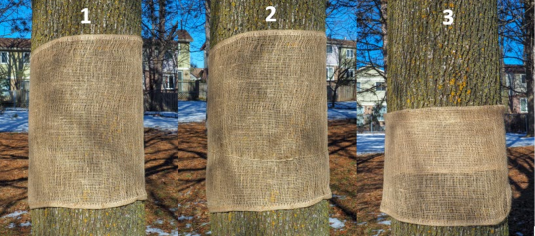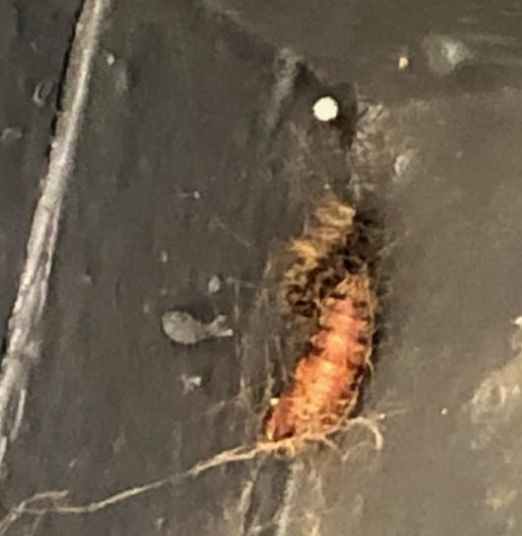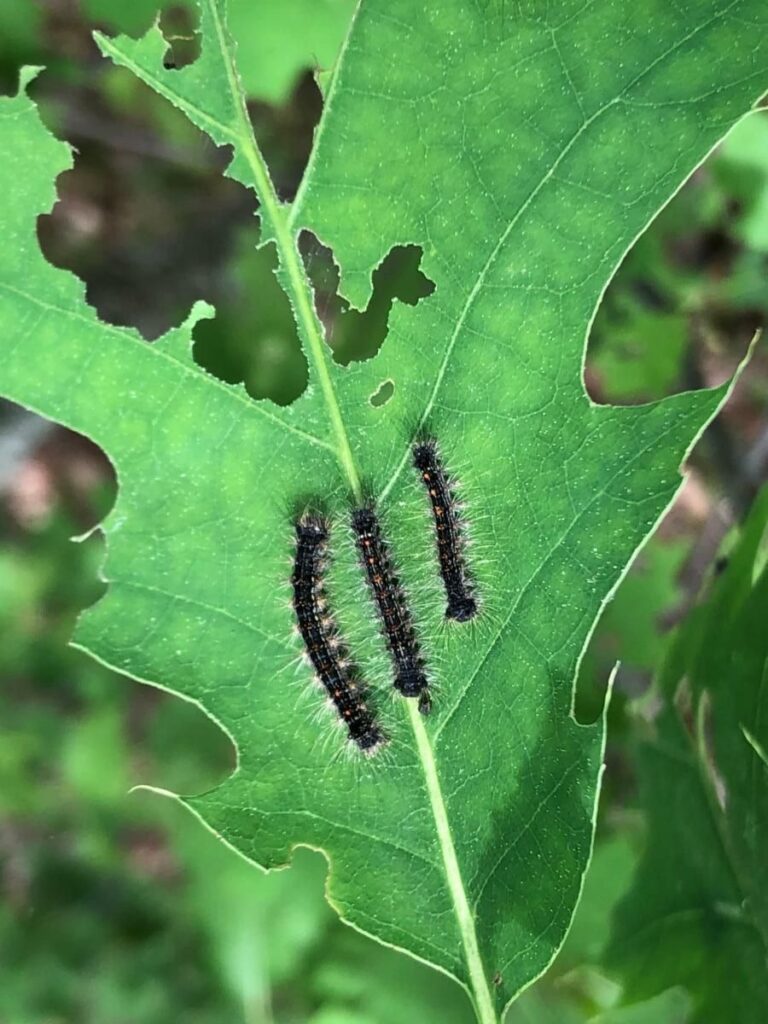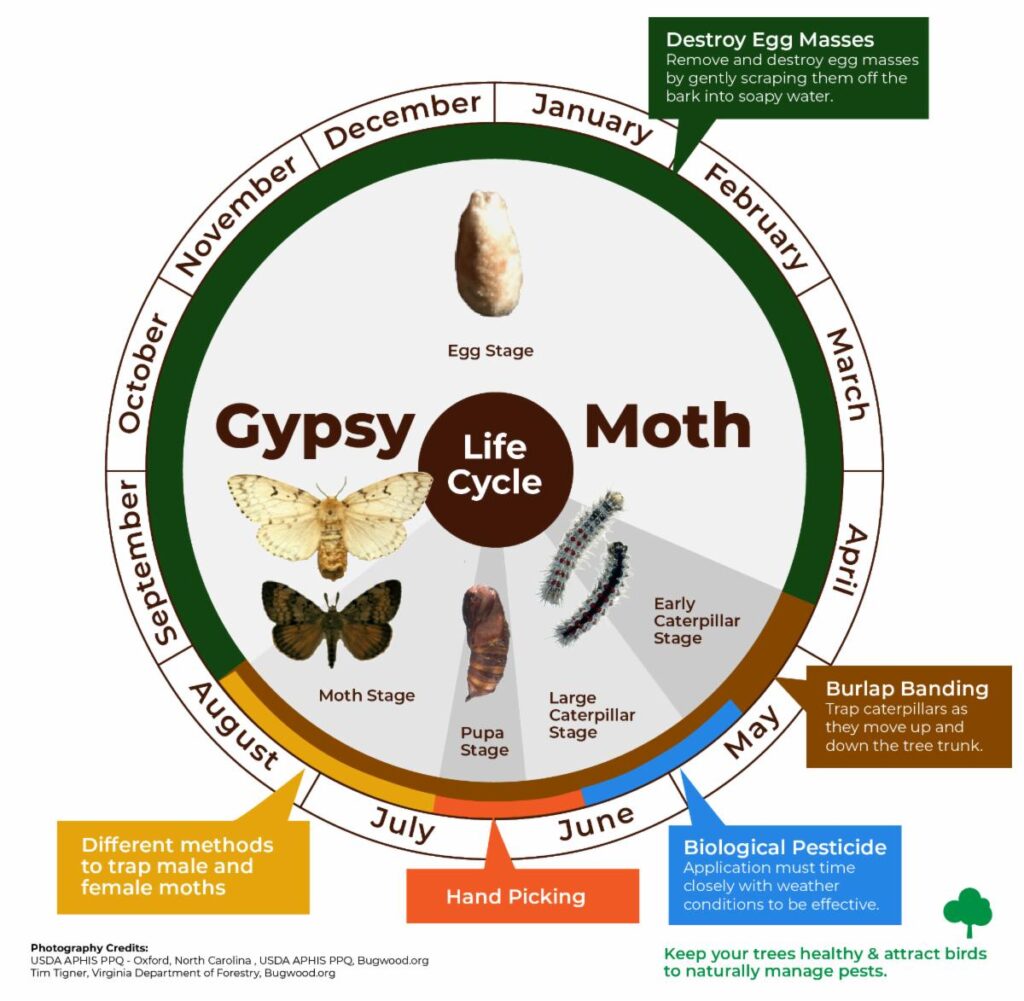
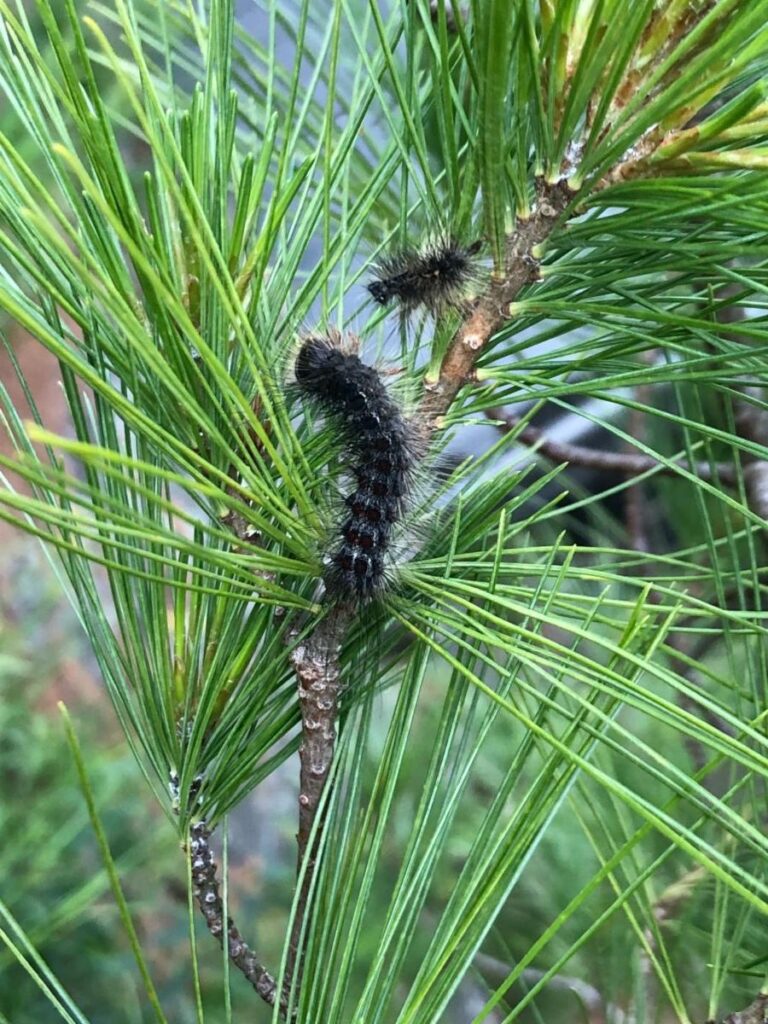
Gypsy Moth Follow Up
2021 has materialized as the summer of the European Gypsy Moth. Many Cottagers have found these caterpillars defoliating hardwood trees, particularly oak trees.
Furthermore, neighbouring landowners on the same island might not agree to spraying and then conflict can arise over “drift” of the spray onto adjoining lands. What can be done by property owners?
How to Combat Gypsy Moth During Various Life Stages
During the current caterpillar stage, one can do “burlap banding” around trunks of trees to capture caterpillars. Then you must collect the caterpillars hiding in the fold of the burlap and destroy them as described in this info sheet on burlap banding from the City of Toronto. BE SURE TO WEAR GLOVES WHEN HANDLING THE CATERPILLARS! Their long hairs can cause an allergic reaction. When picking them off the burlap, you can either drown them in a bucket of soapy water or squish them underfoot. (The former method is tidier!) You can also pick the caterpillars directly off low lying tree branches, the sides of cabins, off walkways and railings and deposit them in soapy water. Once you are finished, the contents can be dumped in the woods. Rolls of burlap can be purchased at any hardware store but are in short supply this year due to the infestation.
After the caterpillar stage comes the pupae or cocoon stage. These can be harder to find than caterpillars because they are stationary but can be found in trees, crevices, and protected areas on sides and roof overhangs of cottages. This stage will start after the large caterpillar stage in July and these, too, can be tossed into a bucket of soapy water. They appear as a dark brown cocoon up to 2 inches long. (See picture of cocoon with egg masses on roof rafter.)
In late July and August, you will notice the adult moth stage. The females are whiteish in colour and the males are brown. Although females have wings, only males can fly. For this stage, you can crush any females you come across on the sides of buildings and trees but it is difficult to capture males as they “flit” about in the air. Some folks have had luck with pheromone traps over the years. These attract the male moths into thinking they are nearing a female, they fly into the traps, and they die. I have ordered some traps from an urban garden store and will report on their efficacy later in the summer. The attached video shows you how to make a pheromone trap on your own (and it looks easy) but you will still need to order pheromone baits to put inside. (Michael Phippen, PaBIA’s Environment Director, has secured some for sale in PaB so stay tuned for further information as there is a tight window of opportunity to effectively use these traps). Please note it is recommended that you keep these baits in your refrigerator until you place them in the traps. The traps should not be put outside until you see the moths “flitting” around your property. They won’t be hard to miss this year given the huge number of caterpillars we are seeing right now!
Finally, comes the egg mass stage as the female moth lays eggs in egg sacs. This happens in late August and these can be destroyed from then until late April of the following year. (Yes, they will survive the winter.) These egg masses are tan coloured and appear a bit fuzzy. Egg masses range from the size of a dime to larger than a quarter. They can be found individually or in small or large masses. Each one contains between 100 and 1,000 eggs. If you do the math, destroying these can prevent a lot of caterpillars from hatching the following spring! Egg masses are often found on tree trunks, from the base to very high up in the canopy but can also be found on structures and objects offering a bit of shelter. These can include soffits, the underside of railings and outdoor furniture, the sides of fences, and even on the underside of leaves. To destroy egg masses, you need a scraper (a paint scraper works well), a container to catch them in, gloves (the fuzzy masses can cause skin irritation), and a bucket of soapy water. Simply scrape and collect the egg masses into the container, dump them into the soapy water and leave them for 48 hours to thoroughly destroy.
Finally, biologists report that the infestation is more distressing and gross than harmful, particularly the caterpillar stage. Most of the trees being defoliate are robust and have evolved to handle outbreaks. During the moth stage, many will die off naturally from viruses and predators. This morning, I actually saw a grackle in a pine tree eating a caterpillar!
